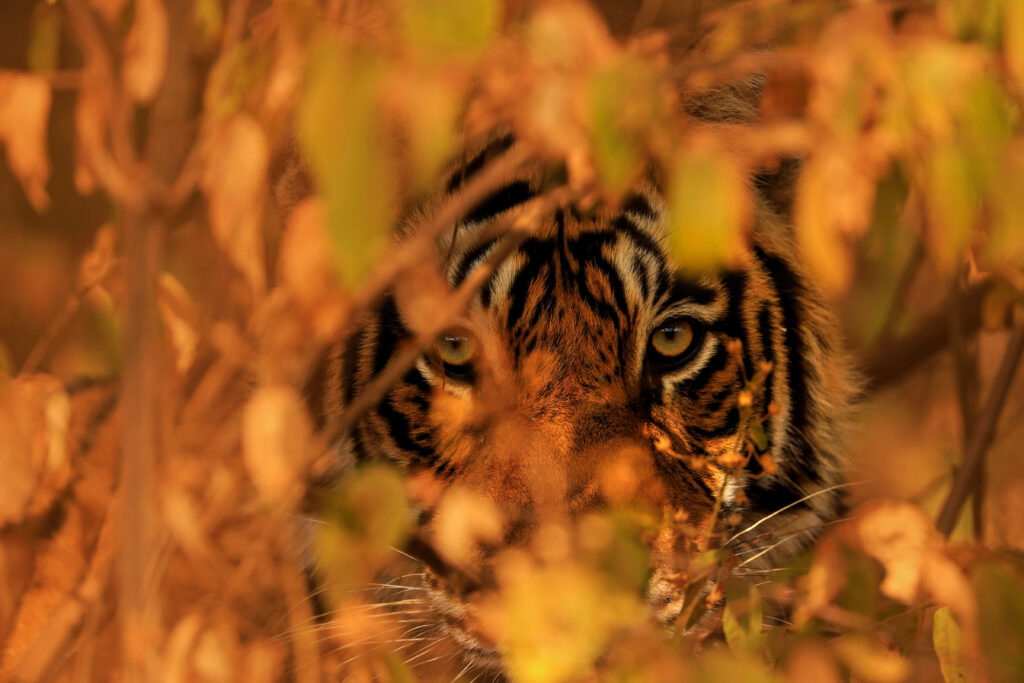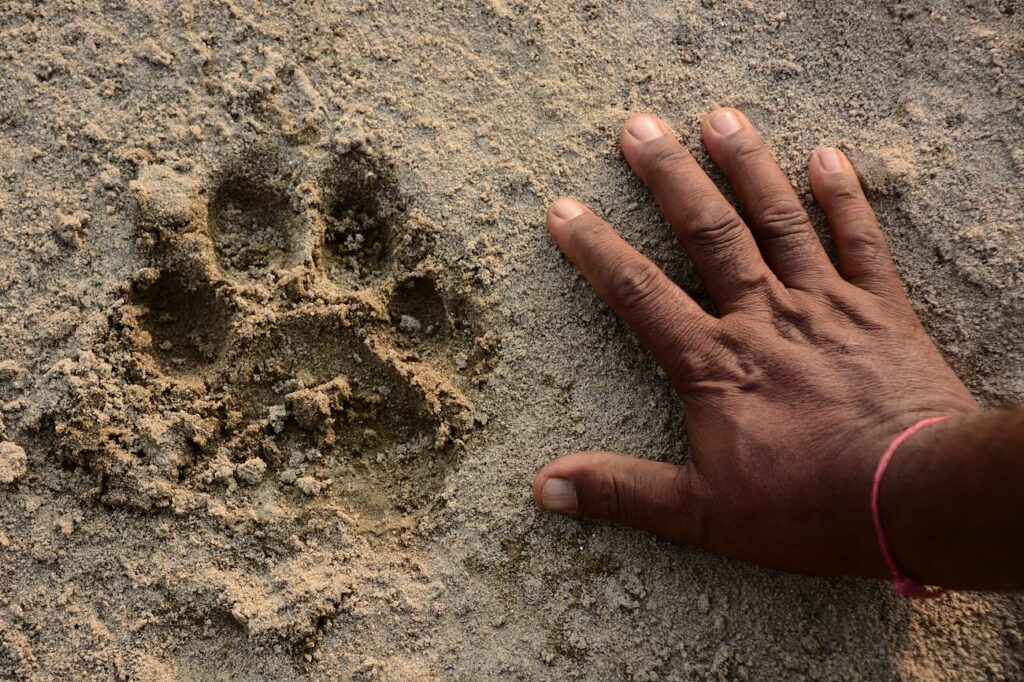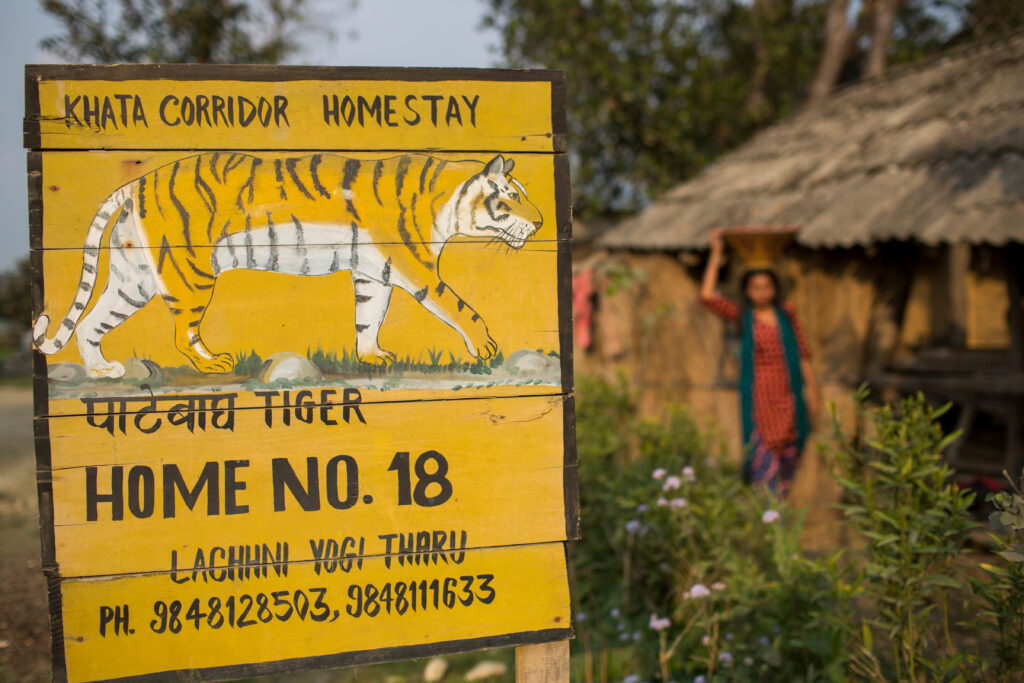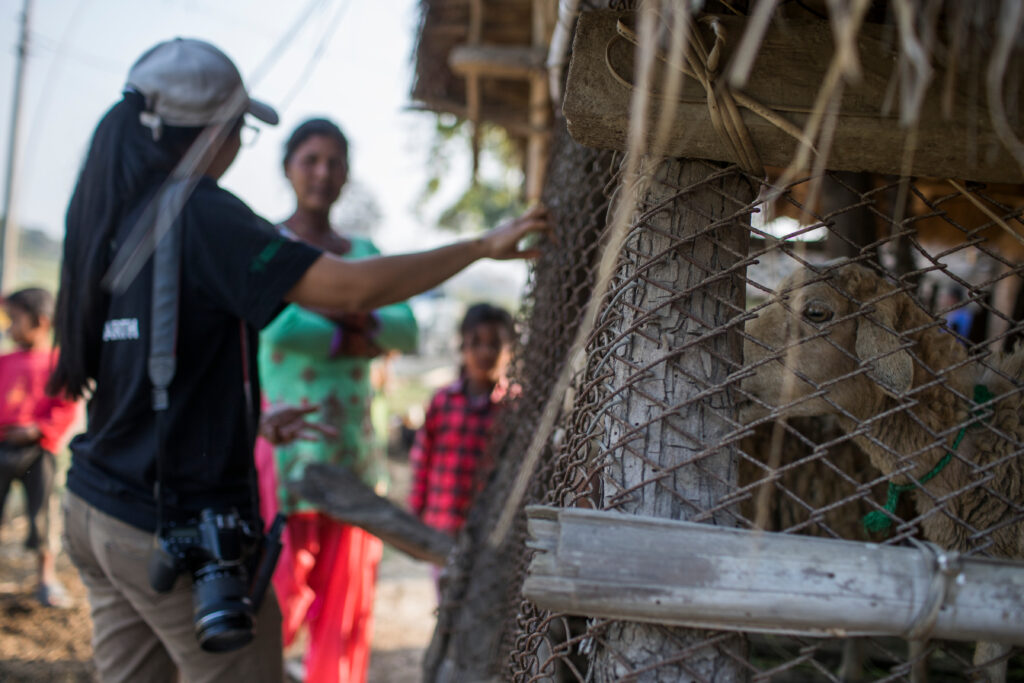Human-tiger conflict is the most urgent threat to wild tigers in Nepal right now
Tiger numbers are on the rise, but this big cat’s future remains uncertain. Together, we can address the linked threats of habitat loss and human-tiger conflict. Please give today.

Living alongside the world’s most captivating and powerful feline predator is no easy matter. It is, however, the reality for nearly 47 million people who live in tiger landscapes across Asia — and for another 85 million who live within just 10 kilometres of existing tiger habitat.
“The growth in wild tigers over the last decade would not have been possible without the support of millions of local people inhabiting in and around the tiger range,” says Dr. Rinjan Shrestha, WWF-Canada’s big cat expert. “At the same time, we can’t take their support for granted.”
Tigers can take livestock and pose a danger to people. As more tigers are forced to live closer to communities, human-tiger conflict is on the rise. When the appeal of conservation diminishes, tigers can become more vulnerable to retaliatory killings, poaching and illegal wildlife trade.

“This is the most urgent threat against tigers in Nepal right now,” says Shrestha.
Today, there is a very real and understandable risk that local tolerance for tigers could decline in coming years if action is not taken to ensure humans and tigers can coexist — now, and far into the future.
Conservation isn’t just about wildlife — it’s about people
Tigers live in some of the most densely populated regions of the world so finding effective ways to partner with people living and working in these areas is vital for the long-term recovery of wild tigers.
“For decades, conservationists have been trying to figure out how best to protect our ecosystems and biodiversity. Local communities and Indigenous peoples already know the secret — they’ve been doing it for thousands of years. But amidst a fast-changing world, these relationships between communities and nature are evolving, too,” says Smriti Dahal, the Community Lead at WWF Tigers Alive Initiative.

In the past, community-based programs looked at the degree to which communities benefitted from increased income, jobs and tourism — the theory being if people benefit financially, they will be more likely to support conservation efforts. But this doesn’t account for the non-monetary costs of conservation.
“For someone who owns a tourist lodge, [the increase in tigers] might come as great news with more visitors coming to see the thriving tigers. But for someone whose house sits on the edge of the forest in close contact with these predators and other animals, this could mean danger and loss.”
In the short-term, WWF is managing the risks to local communities by focusing on preventive measures such as fencing, awareness campaigns, and building predator-proof corrals for livestock. We’re also supporting communities impacted by tigers with victim relief funds, livestock insurance plans and rapid response teams.
In the long-term, a people-centered approach will address some of these shortfalls and form a critical backbone of our tiger conservation efforts from now until 2034, the next Year of the Tiger.

© Emmanuel Rondeau / WWF-US
The main objective of the people-centered tiger conservation approach is to become trusted partners in an equal relationship with communities in tiger landscapes. The partnership is based on trust, transparency, and continuous monitoring of the impact of biodiversity conservation on local communities.
Asking the right questions and working to understand the needs, values, challenges, and ambitions of rapidly-changing communities, and maintaining dialogues and long-term engagement, is key to designing conservation strategies that can ensure the long-term survival of tigers. Many of these strategies have been documented in WWF’s recent Living With Tigers Report, which recommends putting those living with tigers at the heart of conservation efforts.
If we can get this right, ‘Living with Tigers’ will not just be an aspiration but a way of life.
You can help people and tigers thrive together by making a donation today. From now until May 19, your gift will be matched for 2x the impact.


